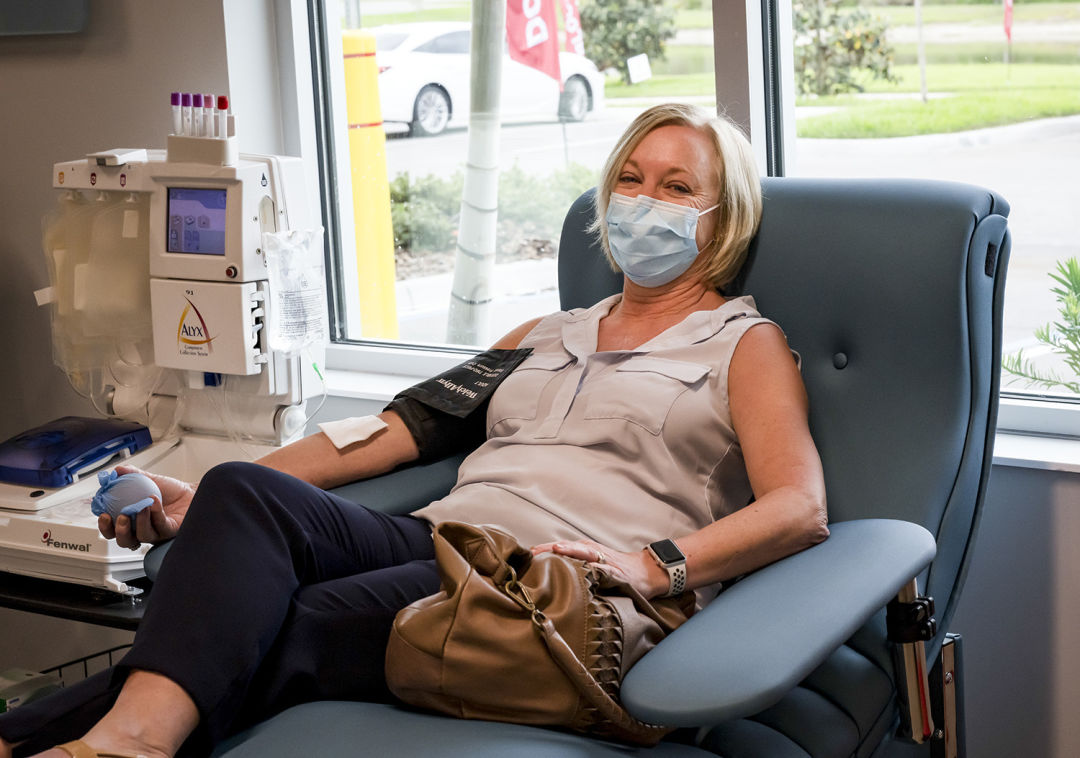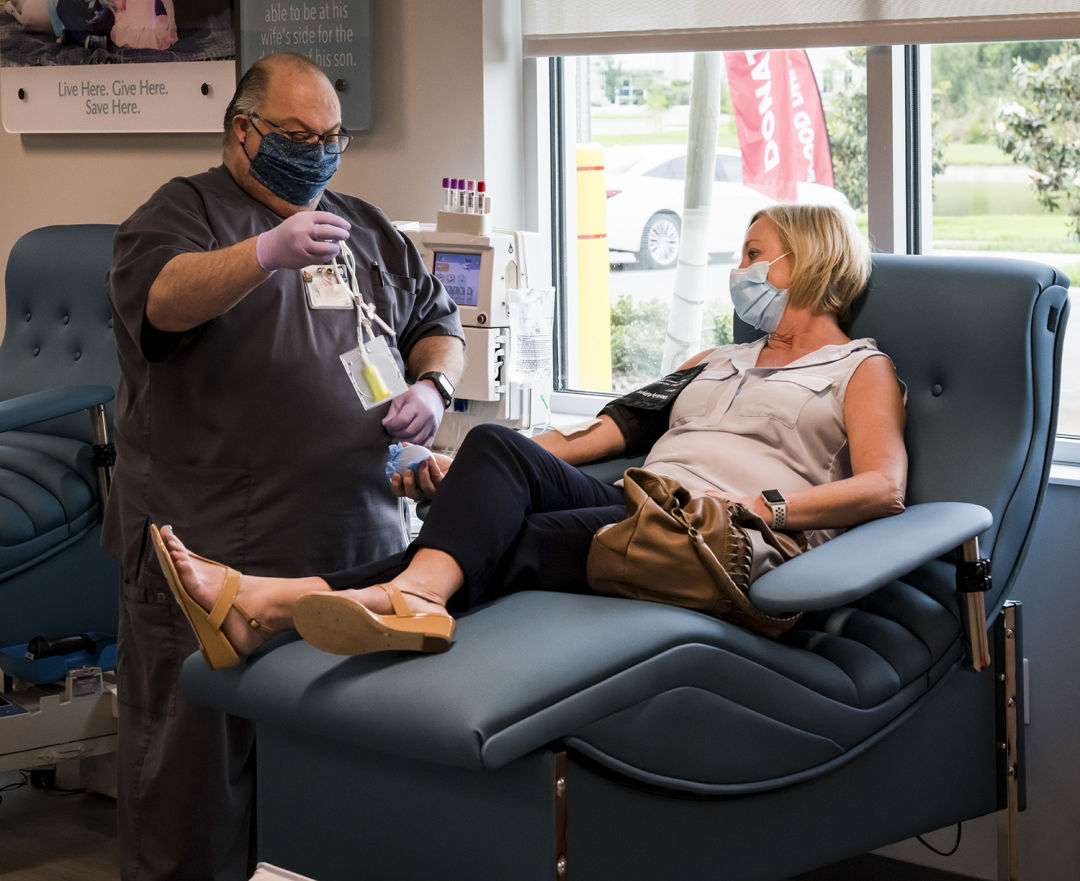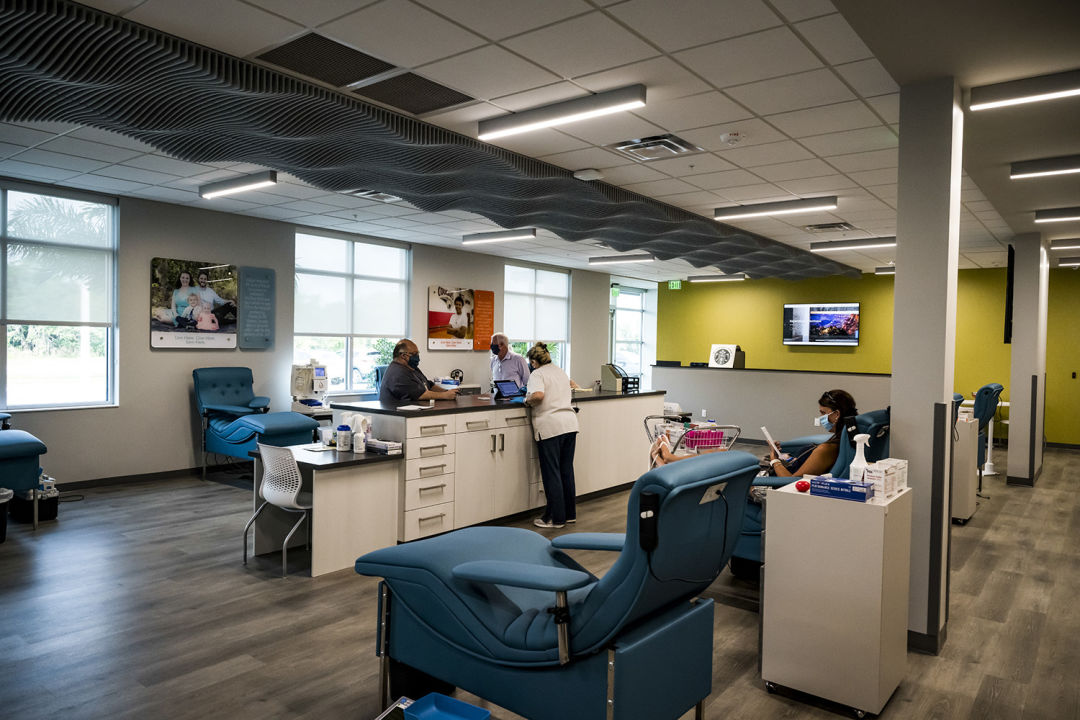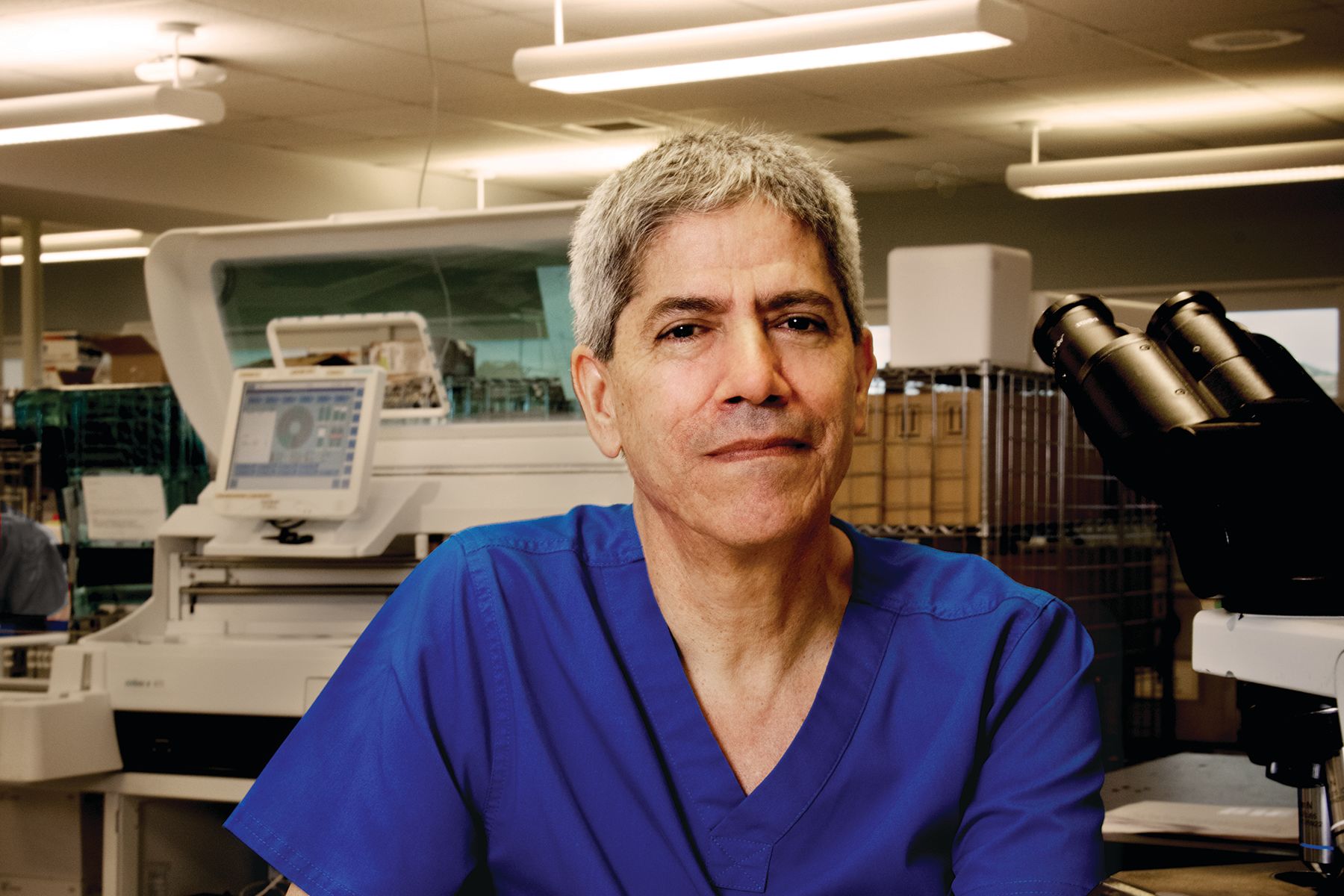SunCoast Community Blood Centers Participates in an Experimental New Therapy for COVID-19

Dr. Maria Finazzo, who recently recovered from COVID-19, prepares to give convalescent plasma at SunCoast Community Blood Bank.
Image: Cliff Roles
Dr. Maria Finazzo and her husband, Dr. Michael Finazzo, flew to Denver on March 6 to help their son and his girlfriend find a place to live. As physicians—she’s a radiologist and he’s a gynecologist—the Finazzos knew the coronavirus was beginning to spread, but these were the early days. Florida had only recorded its first infection on March 1, and travel and business had not yet shut down.
Still, they took precautions. Maria is 58 and her husband is 61, and they knew their ages made them more vulnerable. They used hand sanitizer when they were out and wore masks and gloves while flying and in crowded spaces. They tried to keep some social distancing when they were walking around Denver. The couple returned to Sarasota on March 10. Two days later Maria felt ill. The next day, Michael got sick.
Maria has completely recovered, and on Thursday, April 9, she became SunCoast Community Blood Centers’ first donor of plasma that will be transfused into seriously ill COVID-19 patients.
Convalescent plasma, as it’s called, is not a new therapy. Researchers discovered a century ago that using blood products from people who have recovered from a viral infection can be injected into patients currently suffering with the same disease. The hope is that this treatment will help the sick fight the virus until they develop their own antibodies.
Convalescent plasma has been used with other diseases such as Ebola, SARS and H1N1, but its success in treating COVID-19 patients has not been proven yet. Still, the medical and regulatory communities see promise, and reports out of China have shown some evidence of success, so the treatment was fast-tracked and approved by the FDA a few weeks ago. Since then, blood banks across the country, like SunCoast blood bank, began to collect the plasma.

A SunCoast Community Blood Bank phlebotomist prepares to draw blood from Finazzo.
Image: Cliff Roles
Maria’s story started on March 12, when she woke up feeling “viraly.”
“It wasn’t real obvious to me,” she says. “I was a little achy and feverish and had a little bit of a sore throat. My husband the next morning woke up with a fever. We’re physicians and we both thought, ‘Uh-oh. This could be a problem.’” They knew it was likely that they had contracted COVID-19.
Maria had a milder case even though she was fatigued and developed a bad cough. “It lasted for me for about a week or a little more,” she says. Even while sick she was still able to eat, move and work remotely. “But my husband was really sick, and it lasted two weeks,” she says. Neither of them went to the hospital, although her husband’s physician ordered that he take IV fluids through home health care.
“I was scared at first, and this was well before we saw what was happening all over the country, particularly the deaths in New York,” Maria says. “I’d be more afraid now than then. My husband was terrified because he felt like he was never going to feel well again.”
Maria was able to get a nasal swab test early on when she was feeling sick and was told it would be five to seven days before she would get results. It ended up being 12 days before she got confirmation that she’d tested positive. By that time, she was already better.
After she recovered, Maria, who had heard about donating plasma for hospitalized COVID-19 patients, contacted the SunCoast blood bank to become a volunteer and found out that she qualified as someone who had tested positive, gone through a period of recovery and then tested negative.
“I felt compelled to do it and I hope other [recovered] people do, too,” she says. “Maybe this treatment will prove to be useful in very sick patients. I still wear a mask everywhere. I’d like to see more people doing that. I have colleagues who are putting their lives on the line. We owe it to them and to our community to do our best.”
The process of donating takes about 45 minutes, says Jayne Giroux, director of community development at SunCoast Community Blood Centers. Suncoast has the technology (largely through donations from local foundations in the last five years) to quickly manufacture the plasma into a product that can be sent to local hospitals for transfusions. The therapy will be used for patients who are in a life-threatening situation and when all other treatments have failed.

Inside SunCoast Community Blood Bank
Image: Cliff Roles
Donors must provide written documentation that they had a positive COVID-19 test and be symptom free for more than 14 days. If people were not tested for the virus (not everyone was able to get a test) they may be able to take a serological test that can determine if they have the antibodies that prove they were exposed. For more information, call SunCoast Community Blood Centers at (941) 993-8119 or email [email protected].
Editor's note: SunCoast Community Blood Centers also needs platelet donations. “We have a good supply of blood, but we need platelets,” says Giroux. “We still have cancer patients, trauma patients and emergency surgery patients. Life goes on just like it does every day. This is probably one of the safest environments you can come to right now. Before you even walk in the door we take your temperature, we give you a mask and our phlebotomists are wearing a mask. Everything is sanitized between each donor.”



